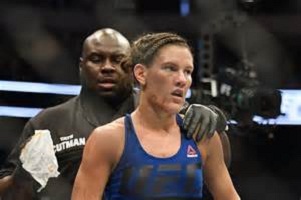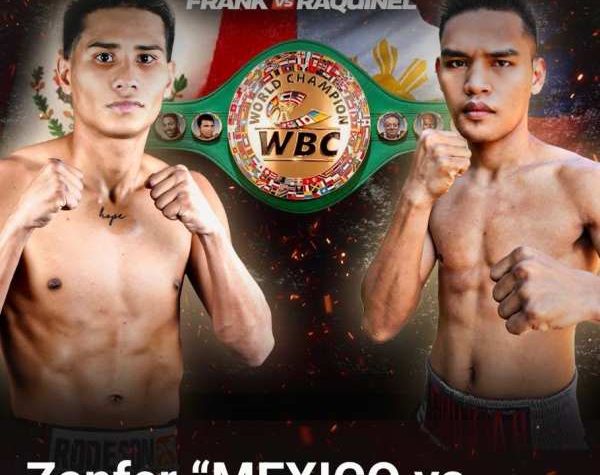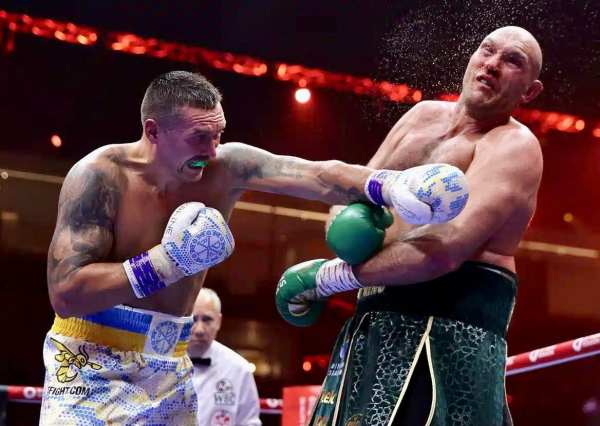
/cdn.vox-cdn.com/uploads/chorus_image/image/55431275/usa_today_10055711.0.jpg)
Initially, when I found out the Texas Department of Licensing and Regulation had incorrectly counted an elevated T:E ratio as proof of PED use, I assumed it was garden-variety commission incompetence. I assumed they didn’t know any better, and once they were informed of their mistake, they would at least try to correct it. I was wrong.
The more I dug into the situation, the more it became apparent that the TDLR didn’t just make one good-faith mistake, but instead embarked on a campaign of incompetence and apparent willful obstructionism to the detriment of Cortney Casey’s career and reputation.
Let me be very clear before we dive in here: Cortney Casey is completely innocent. Cortney Casey did not take steroids. Cortney Casey did not have any advantage over her opponents. Cortney Casey didn’t even do so much as fill out a form incorrectly. This isn’t a loophole, this isn’t a case of an athlete getting off on a technicality. This is the story of an athlete who did nothing wrong having her reputation tarnished by bureaucrats who didn’t want to admit they made a mistake.
Below is the full timeline of events, exactly as they happened, from firsthand sources. This is the true story of a commission’s galling indifference to the damage they caused an innocent athlete.
May 26th: The Texas Department of Licensing and Regulation releases information to Marc Raimondi of MMAFighting.com stating that Cortney Casey had failed a drug test at UFC 211. This is news to Casey, who hasn’t yet been informed of the violation and finds out from someone in her camp that MMAFighting.com had contacted for comment.
That same day, after Marc Raimondi had been sent the information, Cortney receives an email from the TDLR informing her that she had failed a test due to an elevated T:E ratio, and that this “is strong and convincing evidence” that she had used drugs. At this point, it must be noted that an elevated T:E ratio is not considered strong or conclusive evidence of PED use by competent anti-doping regulatory bodies.
The email also states that she had until May 30th to respond to the TDLR and request that her “B” sample be tested at the laboratory of her choice… if she pays for it.
Cortney calls the UFC’s VP of Athlete Health & Performance, Jeff Novitzky, to inform him of the situation. Novitzky initially believes an error has been made, because he has copies of the drug test results from the Texas event and no one tested positive. Upon closer inspection, he realizes Casey’s result has an atypical T:E ratio. That shouldn’t count as a fail, but he figures maybe Texas made a mistake and calls them.
The TDLR official tells Novitzky that they are following USADA guidelines and that a T:E ratio above 4:1 is a fail. Novitzky points out that this is an incorrect understanding of USADA rules and inquires if the proper isotope-ratio mass spectrometry (IRMS) followup testing was performed. The official doubles down on his position that this IRMS testing isn’t needed under USADA/WADA guidelines. It is.
May 30th: Cortney Casey sends an email to the TDLR stating that she wants to have her B sample tested at the WADA accredited SMRTL lab in Salt Lake City and requested IRMS testing be performed on the sample to exonerate her. She also gave the TDLR permission to request her testing records from USADA.
In a separate email, Jeff Novitzky sends multiple TDLR officials copies of WADA guidelines proving a 4:1 T:E ratio requires followup IRMS testing before it is considered a positive result—as he had verbally informed them on May 26th—and supplies further documentation about why this guideline is in place and why a 4:1 ratio shouldn’t be considered a failure on its own.
June 1st: Jeff Novitzky emails the TDLR again asking when a reply can be expected.
June 4th: The TDLR still hasn’t responded to Casey’s email, not even with a confirmation. She sends a follow up email. Jeff Novitzky also hasn’t received a reply from the TDLR at this point.
June 8th: Charles Johnson, Assistant General Counsel at the TDLR, emails Jeff Novitzky to tell him what steps Casey can take to get her B sample tested. This is the first time anyone from the TDLR has supplied Novitzky with this information, a full two weeks after the news of Casey’s test “fail” was released to the media.
June 9th: Jason DeBord, an investigator with the TDLR, contacts Cortney Casey and asks her what she took that elevated her testosterone. Remember, her test result did not actually show elevated testosterone, just an elevated T:E ratio that was likely caused by reduced epitestosterone. Casey tells him that she has been informed that her birth control may have lowered her epitestosterone, which DeBord didn’t seem to understand.
This is the last time anyone from the TDLR contacts Cortney Casey.
Separately, Jeff Novitzky responds to Charles Johnson with documentation of WADA guidelines showing Casey’s initial result shouldn’t have been considered a failure, and further stating that her sample is being sent to SMRTL for the proper followup testing. Charles Johnson replies to the email informing Mr. Novitzky that he will be out of the office the following week, but would review the material submitted and discuss it when he returned. He never responded to Novitzky again regarding this.
June 22nd: The Austin Mobile Drug Testing (AMDT) lab, which took and tested Cortney Casey’s original sample, is informed by SMRTL that her B sample came back clean after IRMS testing. AMDT sends this information—which completely exonerates Casey—to the TDLR and Jeff Novitzky.
Jeff Novitzky separately emails the results to several Texas officials, including Charles Johnson, asking whether or not the TDLR would be retracting Cortney Casey’s positive result today, and what their next steps would be.
Journalists contact the TDLR for a statement in light of the evidence proving Cortney Casey is innocent only to receive a canned response stating they can’t comment on ongoing investigations.
June 24th: Cortney Casey’s reputation has now been tarnished for four, full weeks. The TDLR still haven’t responded to Jeff Novitzky or Cortney Casey informing them of their plans in light of the exculpatory evidence proving Casey’s innocence. They have also neglected to make a public statement acknowledging this, or provided the media with any statement acknowledging it.
June 25th: Charles Johnson replies to Jeff Novitzky’s June 22nd email asking if TDLR would be retracting Casey’s positive test today. The email simply says, “The decision is under review.”
At this point, it’s clear that the problem here wasn’t just an innocent misunderstanding of drug testing results. The problem is TDLR officials don’t seem to care that their mistakes are having very real and very serious effects on an athlete, and instead of trying to resolve these mistakes as quickly as possible, have doubled down on them rather than admit they made a mistake.
No matter how many articles are published about Casey’s innocence, there will still be people who think there is no smoke without fire; people who don’t see the follow-up stories, or don’t care to read them carefully enough to understand what really happened. This is a bell that can’t simply be un-rung. Texas—at the very least—owe Casey a sincere, public apology and a guarantee that no other athlete will be treated this way again.
Sadly, I doubt she even gets that.





More News
UFC269: Venezuelan Julianna Peña Submits Brazilian Amanda Nunes, Becomes the new UFC World Champion
Oliveira, Poitier Make Weight for UFC World Title
Hot UFC269: this Saturday Oliveira vs Poirier Ready for War in Las Vegas